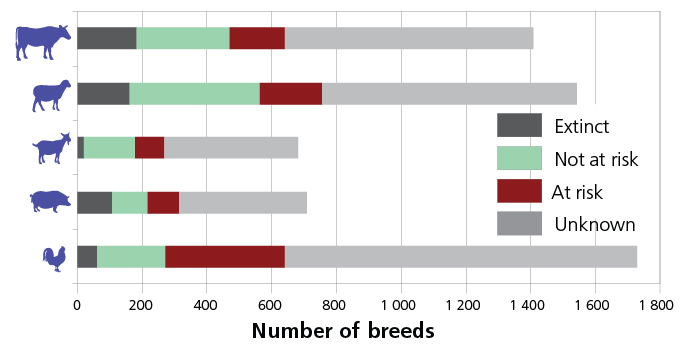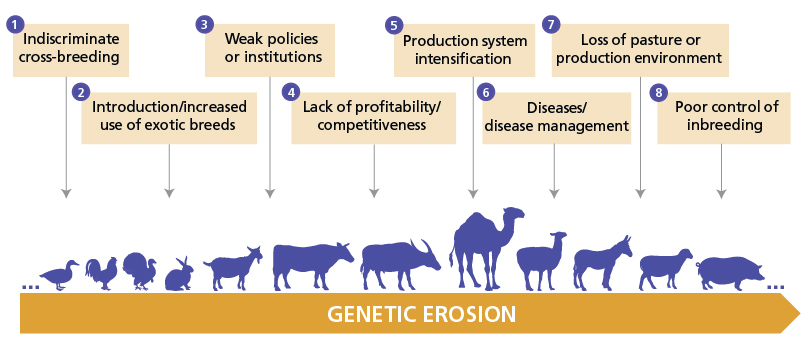Benefits from and threats to animal genetic resources
Benefits
Livestock populations, or animal genetic resources for food and agriculture (AnGR), provide crucial options for the sustainable development of livestock production. Diverse animal genetic resources provide the capacity to adapt and resilience in the face of climate change, emerging diseases, pressures on feed and water supplies and shifting market demands. However, these resources are often poorly managed and under threat. Efforts to manage them sustainably need to be stepped up urgently.
Threats
The proportion of the world’s livestock breeds classified as being at risk of extinction increased from 15 percent to 17 percent between 2005 and 2016. A further 58 percent of breeds are classified as being of unknown risk status because no recent population data have been reported. The number of breeds at risk is therefore likely to be underestimated. Monitoring of population trends is a prerequisite for prompt and effective action to protect breeds from extinction. Erosion of within-breed diversity can be a problem even in breeds whose total population size remains large. Action to prevent the loss of livestock diversity will be more effective if the factors that drive genetic erosion and extinction risk are well understood. While there is broad agreement among stakeholders regarding the range of factors that can be considered potential threats to animal genetic resources, the magnitude of these threats and the ways in which they combine to affect particular breeds in particular circumstances are often unclear.
Status of the world’s livestock breeds
Top 8 reported threats to animal genetic resources
What needs to be done?
- Monitoring of trends in the size, structure and distribution of breed populations needs to be improved as a basis for identifying breeds that are at risk of extinction and prioritizing conservation activities.
- Threats to animal genetic resources need to be better identified and their potential effects better assessed so that action can be taken to combat them or minimize the risk they pose to diversity.



